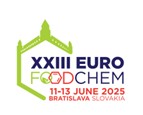Vedecký časopis - archív
Journal of Food and Nutrition Research
Súhrny čísla 4 / 2019
Tarko, T. – Sroka, P. – Duda-Chodak, A. – Januszek, M.
The influence of cultivar of apple-tree and yeasts used for fermentation on the concentration of volatile compounds in ciders and their sensory properties
Journal of Food and Nutrition Research, 58, 2019, č. 4, s. 370-381
Tomasz Tarko, Department of Fermentation Technology and Microbiology, Faculty of Food Technology, University of Agriculture in Krakow, ul. Balicka 122, 30-149 Kraków, Poland. E-mail: t.tarko@ur.krakow.pl
Received 23 July 2019; 1st revised 7 October 2019; accepted 28 October 2019; published online 19 November 2019
Súhrn: The main aim of the study was to evaluate the impact of cultivar of apple-tree and yeasts used for fermentation on the concentration of volatile organic compounds (VOC) in ciders. Among the volatile compounds, amyl alcohols and isobutanol dominated in all beverages. In the group of identified esters, the compound present at the largest concentration was diethylsuccinate. The largest quantities of volatile compounds contained beverages obtained from Rubin apples, while the lowest from the Elise cultivar. Pinocarveol dominated in beverages made from apples of the Rubin and Topaz cultivars, whereas terpinen-4-ol in ciders from the Elise cultivar. In all ciders, relatively large concentration of eugenol and isoeugenol were also observed. The concentration of VOC and terpenoids in beverages largely depended on their concentration in the raw material used for their production. The impact of the yeast strain on their concentration was observed but it was less significant than the impact of apple cultivar. The lowest scores in organoleptic evaluation were obtained for ciders produced by distillery yeasts from apples of Rubin and Topaz cultivars, while the highest scores were obtained for ciders fermented by wine yeasts (Rubin and Topaz cultivars) and cider yeasts (Elise cultivar).
Kľúčové slová: yeast; apple-tree cultivar; volatile compound; terpenoid
Na stiahnutie:
jfnr201939.pdf (PDF, 407.95 Kb, 737x)










